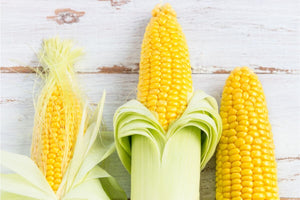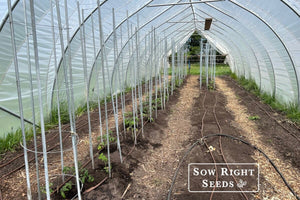Want to Create More Space? Learn the Art of Vertical Gardening!
TechniquesIf you’re tight on space but want some green in your life, why not grow up? There are so many ways to grow a garden, and the more you try, the more you’ll learn. Vertical gardening and other techniques can be adapted for indoor gardens, container gardens, or conventional gardens to give you some extra growing room.

Vertical Gardening Techniques
Vertical gardening allows you to increase your harvest. Instead of spreading out, you can spread upwards.
When considering vertical gardening techniques and other space-saving methods, first consider what types of plants you want to grow. With the right plants, these creative gardening methods can be a perfect fit.
Vegetables such as lettuce with shallow roots and a short growing season are adaptable to growing in a variety of places.
Vining plants like Sweet Peas are a natural choice for trellising.
Smaller varieties of vegetables, such as Tiny Tim Tomatoes and Spacemaster Cucumber, can grow in rooftop containers.

Trellises and Arbors
Vines are eager to climb if you give them support. A trellis, arbor, or pergola are all good options to add growing space to your garden.
Many fruits, vegetables, flowers, and ornamentals can be trained up a trellis and provide food, shade, and beauty. Luffa, cucumbers, tomatoes, and pole beans are all excellent choices for a trellis.
Plants that don't have tendrils that grab onto the structure can be held on with twine and garden ties.

Wall Gardens
South-facing garden walls or building walls can provide space for growing vertically. Vines will grow up the side of these structures, but you can also add some shelves or containers for non-vining plants.
Wall gardens can be especially helpful if your plants need extra warmth, as the wall retains heat and can reflect light.
One popular variation of the wall garden is the pallet garden, where a pallet (or other structure) provides a frame where you can plant containers or small pockets with herbs, green leafies, or flowers. These small plants can be removed and replaced as they are harvested.

Tiered Gardens
A large terraced space might be your ideal garden, but you can still apply the same concept to a smaller footprint. There are plenty of premade-tiered garden planters on the market, but you can also make your own with some planning.
Consider drainage carefully if you’re creating a tiered garden. DIY tiered gardens from ladders or repurposed stairs are popular and attractive.

Window Boxes
If you’ve got windows that can accommodate window boxes, add them. It’s so easy to open your window and care for your herbs or flowers from inside. Deck planters also fall in this category. The rail on your deck is a perfect ledge to add some green.
A mix of marigolds, coleus, and sweet alyssum makes a beautiful window box.

Herb Spirals
Take a cue from permaculture design! Herb spirals are small raised beds that can be tucked into a small space to provide fresh herbs in the garden. The unique shape of the spiral allows gardeners to plant sun-loving and shade-loving herbs in the same bed.
Plant bigger growing herbs in the center and smaller annual herbs around the edges.
Elevated Gardens
No bending, stooping, or kneeling required! A raised garden bed has many benefits, especially the chance to grow in spaces that might otherwise be challenging. These beds are easier to tend and allow people with mobility issues more opportunities to be active.
Raised beds are excellent for growing eggplants, root crops, leeks, and all kinds of herbs.

Rooftop Gardens
Not everyone has access to the type of rooftop that can support a garden, but if you do, why not take advantage of it?
Rooftop gardens often have excellent sun exposure, are free of ground-dwelling pests like deer and rabbits, and can fill up an otherwise empty space with beautiful, beneficial plants!
Use large containers that won't dry out too fast. Anything that enjoys full sun such as peppers and tomatoes will thrive up on the roof.
Vertical Gardening Tips
With all of these gardening techniques, remember to use quality materials to start with. The weight of soil and water can pull over flimsy structures. With sturdy structures, you'll enjoy your vertical garden for years.
Another tip is to water and fertilize as needed. These smaller spaces can dry out quicker than traditional inground garden beds.
These space-saving and vertical gardening techniques can give you a beautiful garden space no matter where you live.
Popular Posts
-

How to Plant and Grow Tender Sweet Corn in Your Home Garden
-

Step-by-Step Plan for The Best DIY Tomato Cage We've Ever Built







Leave a comment